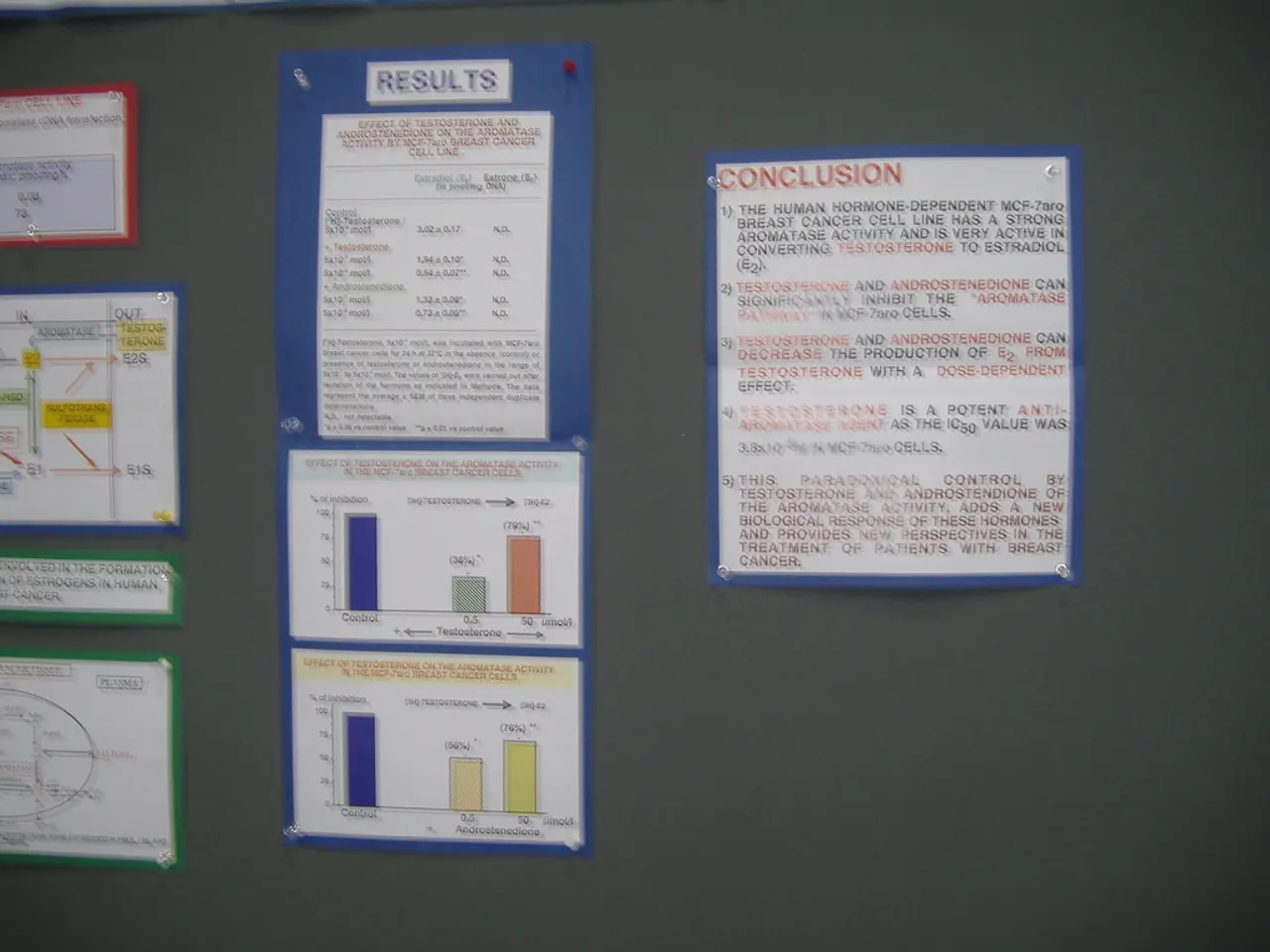Symptoms of Thrombophlebitis Include: Pain, Inflammation, Redness, and Various Other Markers
Thrombophlebitis, the inflammation of a vein due to the presence of a blood clot, is a condition that can have serious consequences if not properly managed. This article explores the risk factors, symptoms, and potential complications associated with thrombophlebitis.
Prolonged immobility due to conditions such as stroke, heart failure, respiratory failure, or a sedentary lifestyle can lead to pooling of blood in the lower extremities, resulting in thrombophlebitis. Other factors that increase the risk include varicose veins or chronic venous insufficiency, recent vein injury or procedures, pregnancy and the postpartum period, older age, obesity, use of hormone-based medications, personal or family history of blood clots or clotting disorders, smoking, postoperative states, and certain medical conditions such as myocardial infarction, heart failure, atherosclerosis, and inflammatory bowel disease.
Dehydration, especially in individuals with pre-existing conditions, can also increase the chances of thrombophlebitis. Common patient symptoms include inflammation, redness, swelling, increase in local temperature, tenderness to palpation, itching, compromised mobility, and swelling in affected limbs. Cord-like veins on palpation and compromised mobility are also common signs.
Epidemiological data indicate that women are more likely to be affected by thrombophlebitis than males. Complications can include pulmonary embolism, deep vein thrombosis, and various other conditions such as cerebral vein and sinus thrombosis, retinal vein occlusion, subclavian vein thrombosis, and renal vein thrombosis.
Thrombophlebitis was once considered a benign and self-limiting condition, but it is now recognized as a potential precursor to more serious conditions, such as pulmonary embolism and deep vein thrombosis. Early diagnosis is crucial to prevent life-threatening complications.
Rudolf Virchow introduced Virchow's Triad, a framework outlining the three key factors in clot formation: venous stasis, endothelial injury, and hypercoagulability. Malignancy and chemotherapy contribute significantly to thrombophlebitis by fulfilling Virchow's Triad.
Trousseau syndrome, a condition that comprises chronic disseminated intravascular coagulopathy, platelet-rich microthrombi, microangiopathic hemolytic anemia, verrucous endocarditis, and thromboembolic episodes, is also associated with thrombophlebitis.
Surgical conditions, such as knee arthroplasty or hip fracture surgery, can lead to thrombophlebitis. Abdominal or pelvic surgery also increases the risk of thrombophlebitis.
Venous disease, including thrombophlebitis, has been known since ancient times, with symptoms documented by Hippocrates as leg ulcers and swollen veins.
In conclusion, understanding the risk factors, symptoms, and potential complications of thrombophlebitis is essential for early diagnosis and effective treatment. Maintaining a healthy lifestyle, regular exercise, and prompt medical attention can help prevent this condition and its serious consequences.
Read also:
- Chest Pain Caused by Compressed Nerves: A Possibility Explored
- Incidence and risk factors associated with cystic fibrosis: A statistical overview
- Hypothyroidism in Canines: A Comprehensive Look, Written by Catherine Barnette, DVM, and Reviewed by Emily Oliver, CVT on 07/31/2025. Published on 07/21/2023. Sharing options include Facebook, Twitter, Email, and Print.
- Can diabetic retinopathy be reversed?






